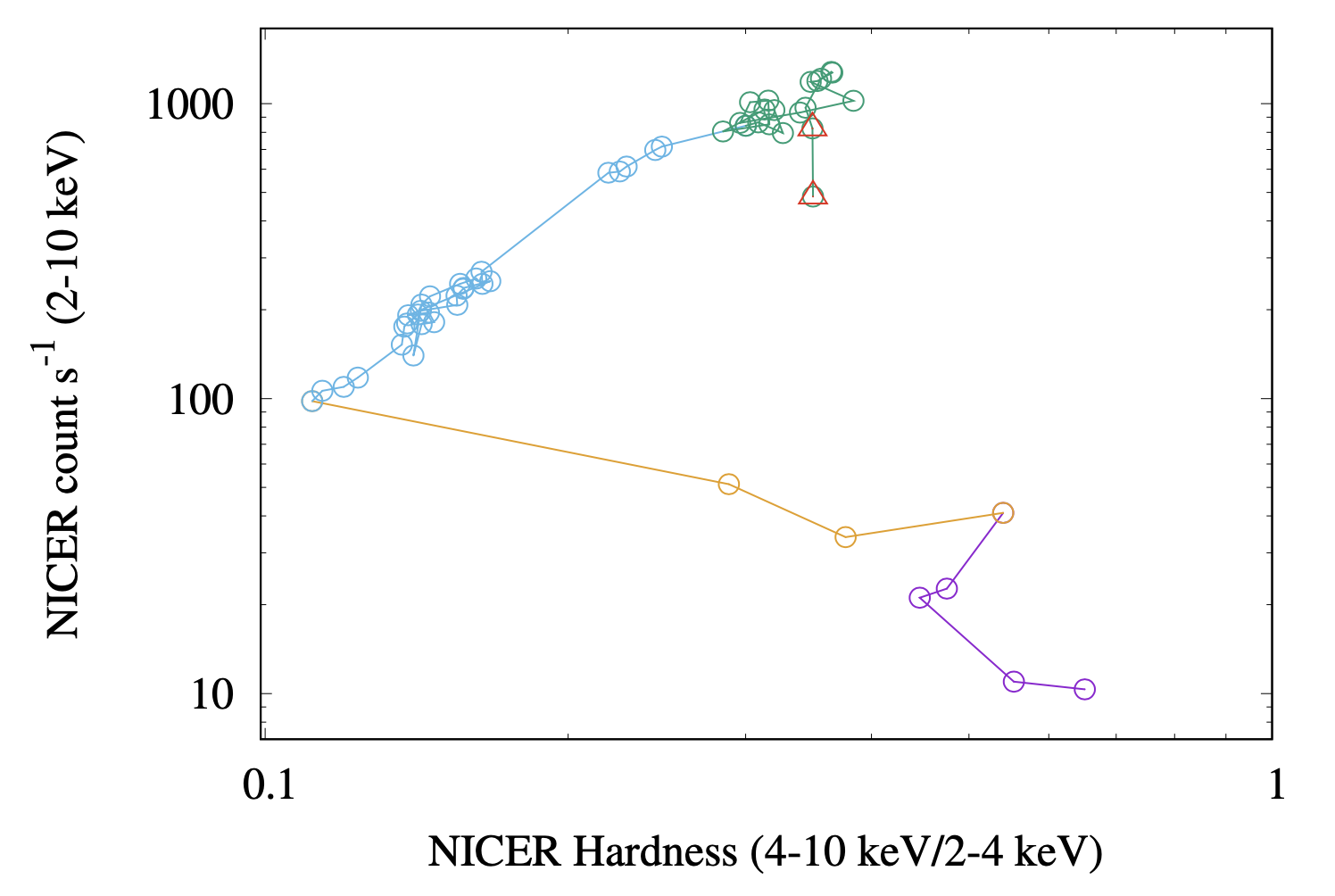NICER / ISS Science Nugget
for February 2, 2023
Knowing a black hole by its colors
The X-ray sky is full of objects that come and go: the processes most often responsible for X-ray emission are energetic but short-lived. In particular, accretion - the transfer of matter from a star to a "compact" companion: a black hole, neutron star, or white dwarf - is usually episodic, flaring up from long stretches of quiescence with orders-of-magnitude increases in brightness that can last from days to months. Such accretion outbursts are the primary paths to the discovery of these otherwise difficult-to-detect objects. Distinguishing the nature of the accreting object is sometimes challenging, but a few empirical traits of, say, black holes vs. neutron stars have emerged through the consistent study of many systems.
In January 2019, the Burst Alert Telescope onboard NASA's Swift observatory reported the detection of a previously unknown source of X-rays, a system that came to be known as Swift J1728-3613. NICER tracked the full outburst, measuring the X-ray brightness, spectrum, and any rapid variability over the course of nearly 150 days. A paper by D. Saha (Indian Inst. of Science Education and Research) and collaborators describing NICER's observations was recently accepted for publication by the peer-reviewed UK journal Monthly Notices of the Royal Astronomical Society.
Saha et al. examined the evolution of the X-ray colors of Swift J1728 with, among more detailed spectroscopic analysis, the hardness ratio (Fig. 1) in relation to the overall source brightness. Plotted on a diagram, this evolution is known to follow, for black-hole accretors, a loose "q" shape consisting of a hysteresis loop at high brightness and a tail extending to low countrates/high hardness values. (In the NICER figure, the right-hand side of the loop would have been filled in with earlier notification and additional observations during the rise of the outburst.) Similarly, the authors describe the rapid variability (or the power-spectral "colors") of Swift J1728, finding evidence for quasi-periodic oscillations in X-ray brightness (Fig. 2) during the first two observations. Such QPOs in the 0.1-10 Hertz frequency range are also commonly seen in black-hole binary systems. Taken together, Saha et al. present a compelling case that Swift J1728 harbors a black hole with a mass several times that of our Sun... and we await a future outburst to learn more about it.


Figure:
Left: The "hardness-intensity" diagram for the likely black-hole binary system Swift J1728-3613 during its 2019 outburst, as measured by NICER. The total rate of X-ray photon detections in the 2-10 keV energy band is on the vertical axis, while the ratio of high- to low-energy photons (or hardness: 4-10 keV relative to 2-4 keV) is on the horizontal axis. The time-evolution of Swift J1728 on this diagram was counterclockwise, starting at the top. The colors of lines and circular points represent different accretion states: soft-intermediate (green), soft (blue), hard-intermediate (orange), and hard (purple). The two triangular points indicate observations during which QPOs were detected (see next figure). Figure from Saha et al. (2023).
Middle and Right: Quasi-periodic X-ray brightness oscillations (QPOs) seen in NICER's first two observations of Swift J1728-3613. The top panels show power-spectral density - the strength of brightness variations at distinct frequencies - as points with error bars, with the red traces indicating a best-fit empirical model for each observation. The bottom panels show "data minus model" residuals. In the left and right figures, respectively, the measured QPO frequencies are 5.40 and 5.55 Hertz. Figure from Saha et al. (2023).
<< Previous
Main Index
Next >>